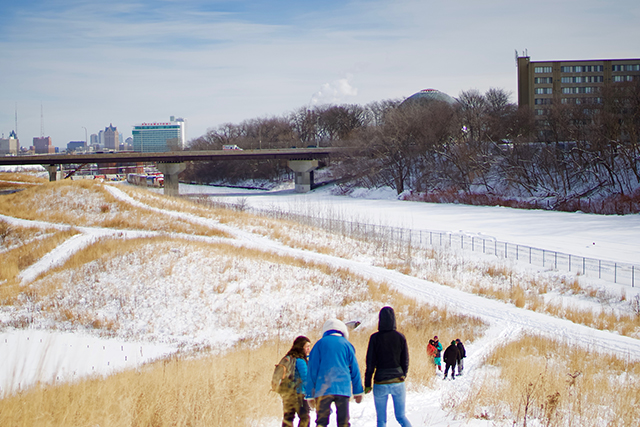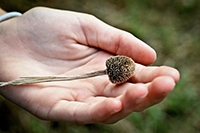After you sow,
It may not just grow,
Sometimes it needs snow,
Or burning, you know.
It may sit there for years,
‘til conditions are pure,
This state of seed nation,
Is called stratification.
My poem above describes why seeds are pretty remarkable and hints to why new restoration sites, such as Three Bridges Park in the Menomonee Valley, change vastly in the early years after initial seeding.
One reason why new restoration sites change a lot in the first few years is because most Southeast Wisconsin native seed, whether it’s prairie or woodland, requires a form of stratification in order to germinate. Stratification is a treatment simulating natural winter conditions, warm/cool seasons, that native Southeast Wisconsin prairie and woodland seed need to endure before sowing and germination (stratification is most commonly referred to as a human controlled process, but for this blog, I’m talking about natural stratification of enduring weather seasons). Some seeds may be in an embryonic dormancy and will not germinate until that dormancy is broken—some seed species even require two cycles of warm and cold conditions to break the dormancy! That means once the seed is dropped, it sits and settles on the ground in fall, stays there through winter, and then the following spring, summer, and fall before going into yet another winter. At that point the seed is ready to germinate, a year and a half AFTER being dropped by the plant.

New restoration sites like Three Bridges Park go through many changes because most native seed planted requires a form of stratification, like going through a season of cold weather, to germinate.
Another reason why there’s a lot of change in an early restoration site is because plants usually don’t produce flowers the same year they germinate (except annuals). Typically, native perennial prairie plants go through three seasons before producing flowers. The saying goes, “first year they sleep, second year they creep, third year they leap.” Some plants may even take up to 6 – 10 years after germinating to produce flowers! And since we typically notice changes to a restoration site based on how many and what type of flowers we see, we could see changes throughout the first 15 – 20 years of a restoration project.

Three Bridges Park is going into its sixth growing season since its initial seeding.
Photo: Chris Winters
Considering Three Bridges Park is going into its sixth growing season since the initial seeding, there is a lot of change happening! I encourage you to participate in our weekly ROOT (Restore Our Outdoors Together) volunteer opportunities to tune into the changes happening every day.





